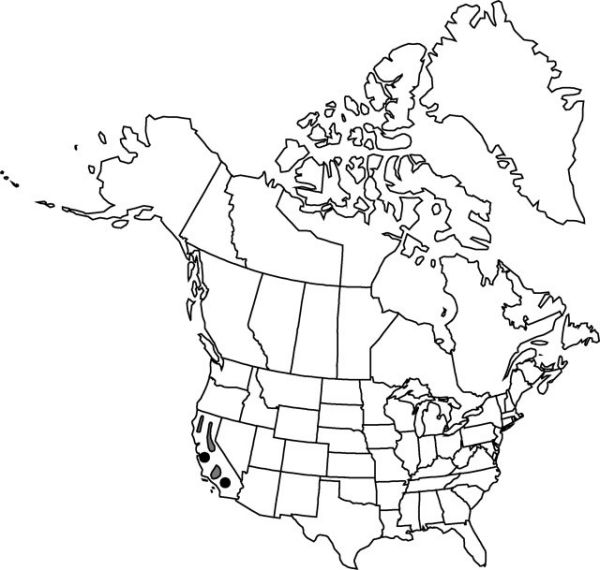Allium cratericola
Leafl. W. Bot. 1: 132. 1934.
Bulbs 1–3, not clustered on stout primary rhizome, ovoid, 1.5–2.5 × 1–2 cm; outer coats enclosing 1 or more bulbs, brown or gray, membranous, lacking cellular reticulation or cells arranged in only 2–3 rows distal to roots, ± quadrate, without fibers; inner coats white, cells obscure, ± quadrate, or not visible. Leaves usually deciduous with scape, withering from tip at anthesis, 1–2, basally sheathing, sheaths not extending much above soil surface; blade solid, straight or weakly falcate, flat or broadly channeled, 10–30 cm × 1–21 mm, margins entire. Scape usually forming abcission layer and deciduous with leaves after seeds mature, frequently breaking at this level after pressing, solitary, erect, solid, terete, 2–12 cm × 1–3 mm. Umbel persistent, erect, compact, 20–30-flowered, hemispheric, bulbils unknown; spathe bracts persistent, 2–4(–6), 10–16-veined, ovate, ± equal, apex acuminate. Flowers campanulate, 7–14 mm; tepals erect, white or pink to purplish with dark greenish brown or purple midveins, lance-oblong, elliptic, or ± oblanceolate, ± equal, becoming papery and investing fruit, margins entire, apex obtuse; stamens included; anthers yellow; pollen yellow; ovary crested; processes 3, central, rounded, minute, margins entire; style linear, equaling stamens; stigma capitate, scarcely thickened, unlobed; pedicel 5–18 mm. Seed coat dull; cells ± smooth. 2n = 14, 28.
Phenology: Flowering Mar–Jun.
Habitat: Serpentine, volcanic, and granitic soil
Elevation: 300–1800 m
Discussion
Populations of Allium cratericola from southern California are 2-leaved, while those from the north are either 1- or 2-leaved or sometimes a mixture of both forms.
Selected References
None.

